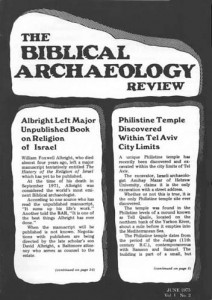When Was the Age of the Patriarchs?—Of Amorites, Canaanites, and Archaeology
This is an important, original article, which we print despite the fact that it is somewhat more technical than our usual fare. A word of introduction may be helpful to the non-professional.
Instead of using absolute dates to designate a cultural period of time, archaeologists often find it easier to use generally agreed upon names for different cultural periods. Thus, archaeologists may speak of the Bronze Age or the Iron Age. This is far less cumbersome than reciting the dates each time the period is referred to. And it emphasizes that a cultural period is referred to rather than an arbitrary chunk of time, as absolute dates would imply. Names for cultural periods are also handy because it is sometimes difficult to specify precisely with absolute dates the beginning and end of the cultural period. Indeed, the absolute dates may shift on the basis of new knowledge, because these periods are marked by cultural breaks, rather than by any fixed point in time such as the end of a century. For all of these reasons, an archaeologist will probably use the term Bronze Age rather than giving the absolute dates for the period.
As knowledge has expanded, these cultural periods have been subdivided—into Early, Middle and Late Bronze Age and Iron I and II. On occasion, observed cultural discontinuities require further subdivisions and, sometimes, even further subdivisions. Thus, we have Middle Bronze I and Middle Bronze II, and even Middle Bronze IIA, Middle Bronze IIB, and Middle Bronze IIC.
The following article is particularly concerned with the Middle Bronze I and Middle Bronze II periods. Generally accepted absolute dates corresponding to these two periods are as follows:
Middle Bronze I—2300–1900 B.C.
Middle Bronze II—1900–1550 B.C.
Already a library member? Log in here.
Institution user? Log in with your IP address.

